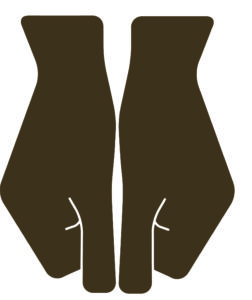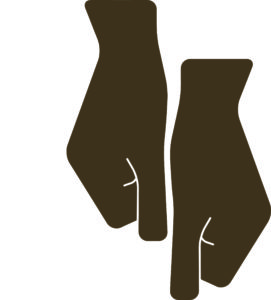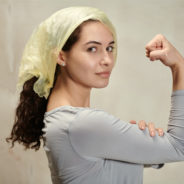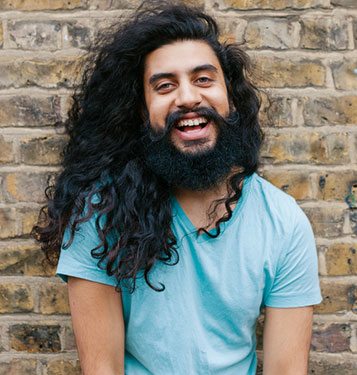Excerpt from The Map to Abundance
“Our bodies can talk. And they don’t lie.”
– Uwe Albrecht, author of Yes/No:
Using the Arm-Length Test for Instant Answers & Wellbeing
For most people, the most challenging aspect of changing beliefs is determining what the beliefs are that need changing.
Of course, one way to determine your beliefs is to observe your reality and work backwards, asking: “What would someone have to believe in order to have created this reality?”
But even then, it’s great to be able to determine that you actually hold the belief you think you hold, and then to test again, after you’ve changed the belief, to make certain it is indeed different.
I really like “body testing,” or applied kinesiology, as a way to see what you hold in your subconscious mind.
What is applied kinesiology?
Applied kinesiology is sometimes called “muscle testing.” It allows the body to indicate a true or false response when presented with a statement.
Note: This does not indicate whether something is true or false for others or in the world—only whether it is predominantly true or false in your subconscious mind.
The reason that applied kinesiology works is that the body is essentially an electrical circuit. Energy is always flowing within that circuitry.
When your energy is flowing smoothly, your body works the way it is supposed to. When something blocks the energy from flowing, your body doesn’t work as well.
What causes the blockage? Anything that is untrue for you will cause an energy blockage. This is how we can use applied kinesiology to indicate whether we believe something or not.
These methods works very well if you are centered and calm and believe it will work.
If you suspect you might not let this work, before anything, change these beliefs:
Applied kinesiology will not work for me to determine my beliefs.
It is not safe to use applied kinesiology to determine my beliefs.
When you’ve changed those beliefs, then you are ready to learn…
How to use the “Sway Test” to determine your beliefs:
The Sway Test is an easy way to test for beliefs, and unlike other forms of applied kinesiology, you don’t need another person to assist you in the testing.
It may take some practice to become comfortable with this method, but once you do, it’s fun and can be amazingly accurate.
Here are the steps:
1. Find a quiet place where you will not be disturbed.
2. Remove your shoes.
3. Stand up straight, with your feet shoulder width apart.
4. Become calm and centered. Take a few deep breaths to increase your centeredness.
5. Clear your energy field[1] by tapping on your breastbone 15 or so times (with medium pressure). Then tap on your thyroid gland (use the right hand to tap on the left side, your left hand to tap on the right side), 15 or so times (with medium pressure). And then tap on your forehead 15 or so times (with medium pressure).
6. Relax your body—unlock your knees.
7. Before you test for beliefs, practice how the true/untrue answers show themselves in your body. Close your eyes and say, “My name is (and say your name).”
Notice that your body remains solid and strong. It will not be difficult to stand without swaying.
Next, with your eyes still closed, say, “My name is (and make up a name or say someone else’s name).”
You will notice you will lose your balance. Your body will either fall slightly back, or slightly forward, or otherwise become wobbly. It does this because the “untruth” of saying your name is a name that isn’t yours interferes with the energy flow of your body, causing your body to sway.
8. Repeat this “name game” a few times until you feel good about telling the difference between true and untrue in your body. You can also simply say “yes” or “no” and should have similar results.
9. Now say the belief you suspect you hold, such as “I do not create my entire reality.”
If you do hold that belief, your body will hold strong and solid. If you do not hold the belief, your body will falter. Basically: strong = yes, wobbly = no.
10. Test for your beliefs. Be sure to always test the negative belief and not the positive one, because often times you hold both beliefs in your subconscious mind. However the positive beliefs are serving you, so no need to change those. Only test ten or so beliefs at one time, taking short breaks between the sets.
11. When you are complete, you have a list of negative beliefs to change into positive beliefs. Use the techniques in Appendix D to do so.
An alternative method to easily test for beliefs is the “Arm Length Test[2].” This test works similarly to the “Sway Test” in that if your body shows “yes,” which indicates smoothly flowing circuitry, when you bring your arms together in front of you, they will be the same length. If your body shows “no,” your arms will appear to be a different length.
How to use the “Arm Length Test” to determine your beliefs:
Here are the steps:
1. Find a quiet place where you will not be disturbed.
2. Remove your shoes.
3. Stand up straight, with your feet shoulder width apart.
4. Become calm and centered. Take a few deep breaths to increase your centeredness.
5. Clear your energy field[3] by tapping on your breastbone 15 or so times (with medium pressure). Then tap on your thyroid gland (use the right hand to tap on the left side, your left hand to tap on the right side), 15 or so times (with medium pressure). And then tap on your forehead 15 or so times (with medium pressure).
6. Relax your body—unlock your knees.
7. With your arms resting loosely at your sides, say “yes,” and bring your arms together in front of you. Your thumbs should come together in your middle and be very close, if not exactly, the same length.
Bring your arms back to the side of your body.
8. With your arms resting loosely at your sides, say “no,” and bring your arms together in front of you. Your thumbs no longer be matching—your arms will appear to be different lengths.
Bring your arms back to the side of your body.
9. Practice “yes” and “no” a few times.
10. Next practice using the “name game.” Say, “My name is (and say your name).”
Bring your arms out loosely in front of you. Notice they appear to be the same length.
Next, say, “My name is (and make up a name or say someone else’s name).”
Bring your arms out loosely in front of you. Notice they appear to be different lengths.
11. Repeat this “name game” a few times until you feel good about telling the difference between true and untrue in your body. You can also simply say “yes” or “no” and should have similar results.
12. Now say the belief you suspect you hold, such as “I do not create my entire reality,” and bring your arms together loosely in front of you.
If you do hold that belief, arms will appear the same length. If you do not hold that belief your arms will appear to be different lengths. Basically: equal length = yes, different length = no.
13. Test for your beliefs. Be sure to always test the negative belief and not the positive one, because often times you hold both beliefs in your subconscious mind. However the positive beliefs are serving you, so no need to change those. Only test ten or so beliefs at one time, taking short breaks between the sets.
When you are complete, you have a list of negative beliefs to change into positive beliefs. Use the techniques in Appendix D to do so.
I suggest using these methods along with the other methods of determining beliefs:
1. Asking yourself if your reality reflects the belief.
2. Asking yourself whether it feels accurate to you in your gut.
3. Asking your child, adolescent and young adult about their beliefs.
While there is no harm in changing a belief you don’t really hold, there is also no benefit to it. You only have so many hours in a day, and you may as well use them effectively.
This test may not work for everyone. Why? Because some people really want to control and don’t feel safe letting their body take over for a bit.
If it isn’t working for you (after you’ve changed the beliefs about applied kinesiology), use the other methods of determining your beliefs, covered in more detail in The Map – To Our Responsive Universe, Where Dreams Really Do Come True.
______________
[1] This energy field clearing technique is from The Team, channeled by Jackie Salvitti. For more information ETHealing.com.
[2] The Arm Length Test was developed by Belgian osteopath Raphael van Assche.
[3] This energy field clearing technique is from The Team, channeled by Jackie Salvitti. For more information ETHealing.com.












2 comments to " How to Test Yourself for Beliefs "